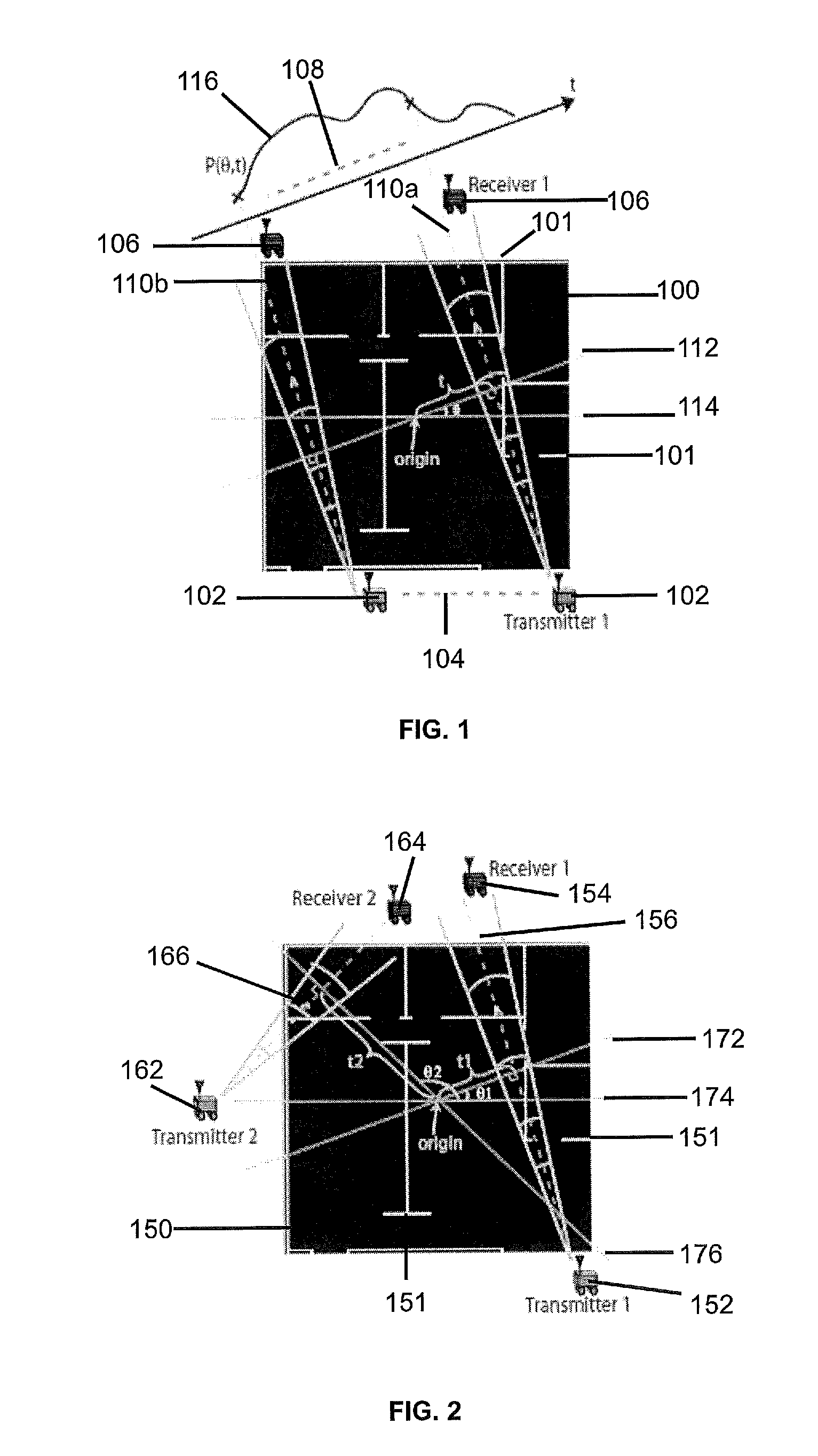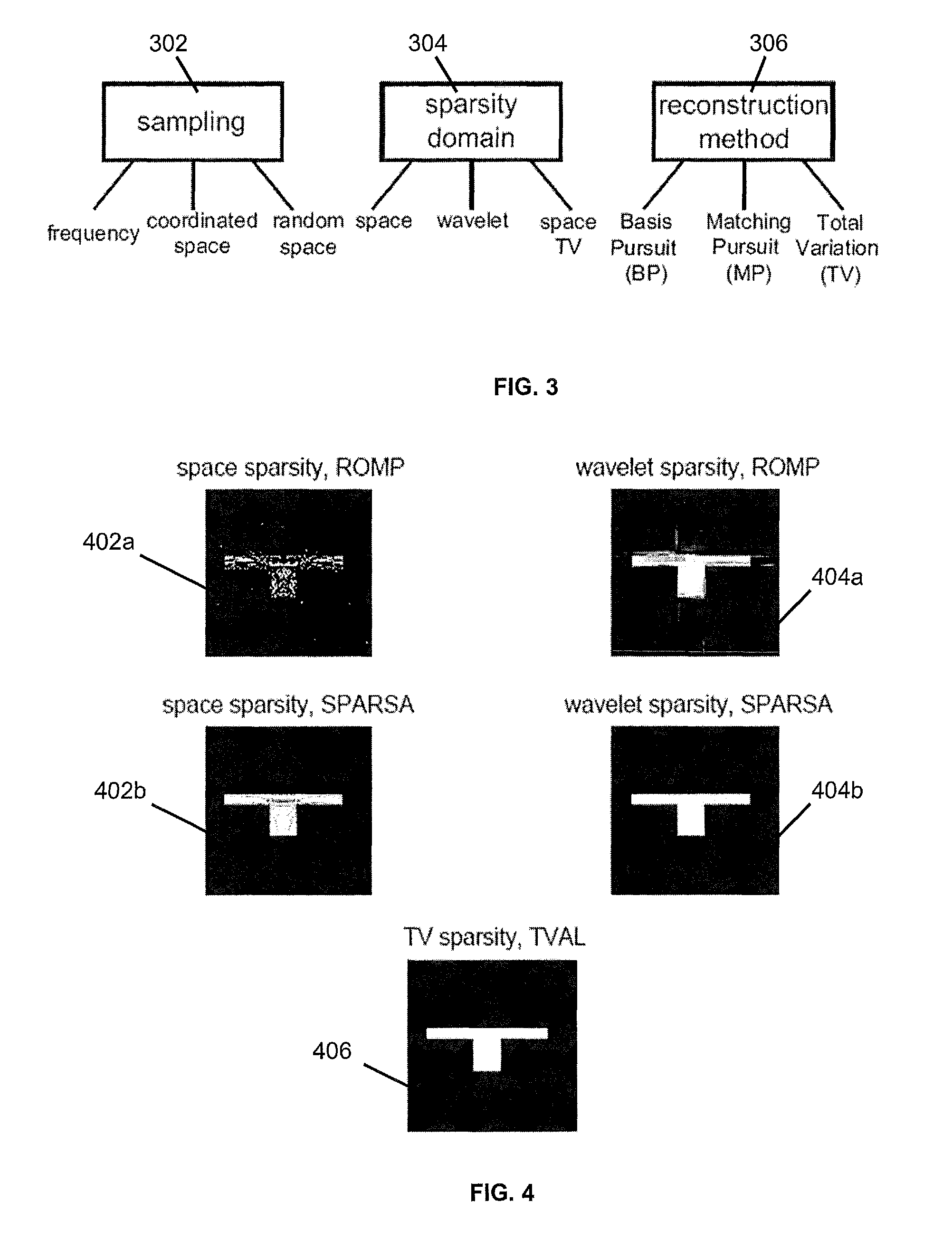System and methods for obstacle mapping and navigation
a mapping system and obstacle technology, applied in the field of mapping environments, can solve problems such as non-uniform sampling theory, and achieve the effect of facilitating “see-through” capabilities
- Summary
- Abstract
- Description
- Claims
- Application Information
AI Technical Summary
Benefits of technology
Problems solved by technology
Method used
Image
Examples
Embodiment Construction
[0026]Compressive sampling (otherwise known as compressed sensing, compressive sensing or sparse sensing) asserts that certain signals can be acquired from far fewer samples or measurements than traditional methods. More specifically, compressive sampling is based on the fact that real-world signals typically have a sparse representation in a certain transformed domain. Compressive sampling relies on sparsity and incoherence. Sparsity pertains to the signals of interest and incoherence pertains to the sensing modality.
[0027]In an overview of compressive sampling, consider the case where a vector xεN is to be recovered. For two-dimensional (“2D”) signals, vector x can represent the columns of the matrix of interest stacked up to form a vector. The incomplete linear measurement of vector x obtained by the robot devices, wherein KK. Thus, γ=Φr where Φ is the observation matrix. Clearly solving for x based on the observation set γ is an ill-posed problem as the system is severely under-...
PUM
 Login to View More
Login to View More Abstract
Description
Claims
Application Information
 Login to View More
Login to View More - R&D
- Intellectual Property
- Life Sciences
- Materials
- Tech Scout
- Unparalleled Data Quality
- Higher Quality Content
- 60% Fewer Hallucinations
Browse by: Latest US Patents, China's latest patents, Technical Efficacy Thesaurus, Application Domain, Technology Topic, Popular Technical Reports.
© 2025 PatSnap. All rights reserved.Legal|Privacy policy|Modern Slavery Act Transparency Statement|Sitemap|About US| Contact US: help@patsnap.com



